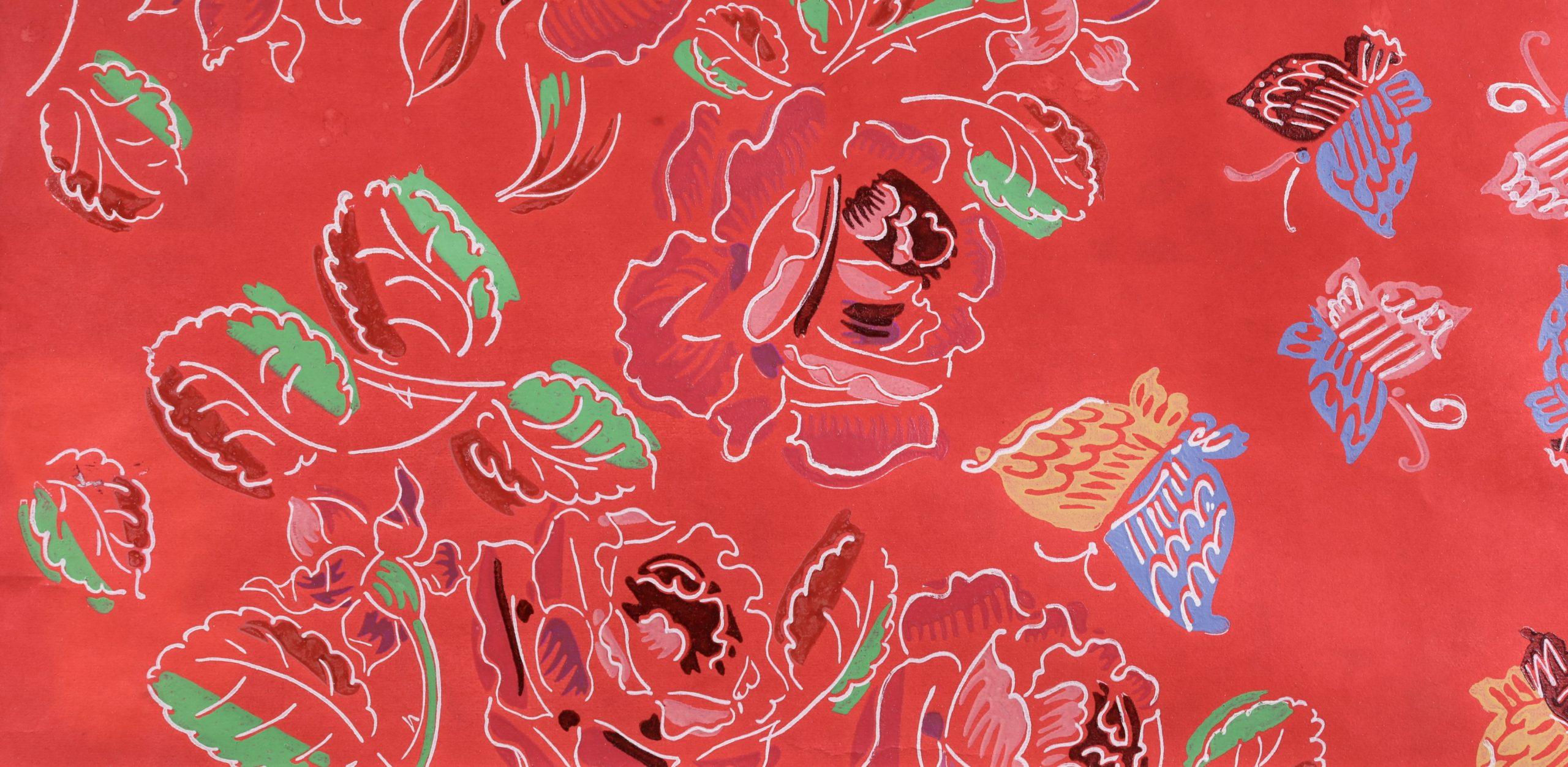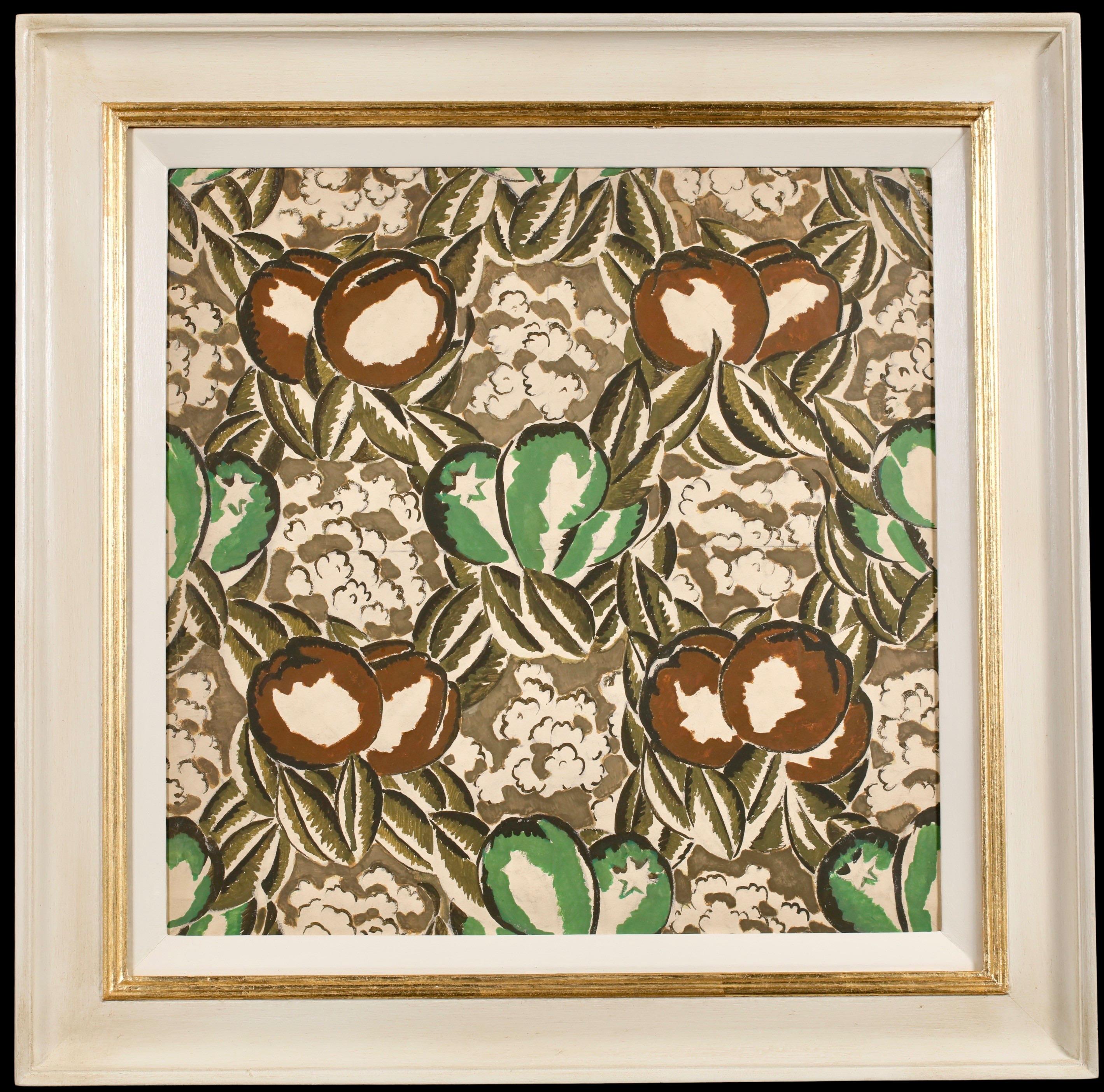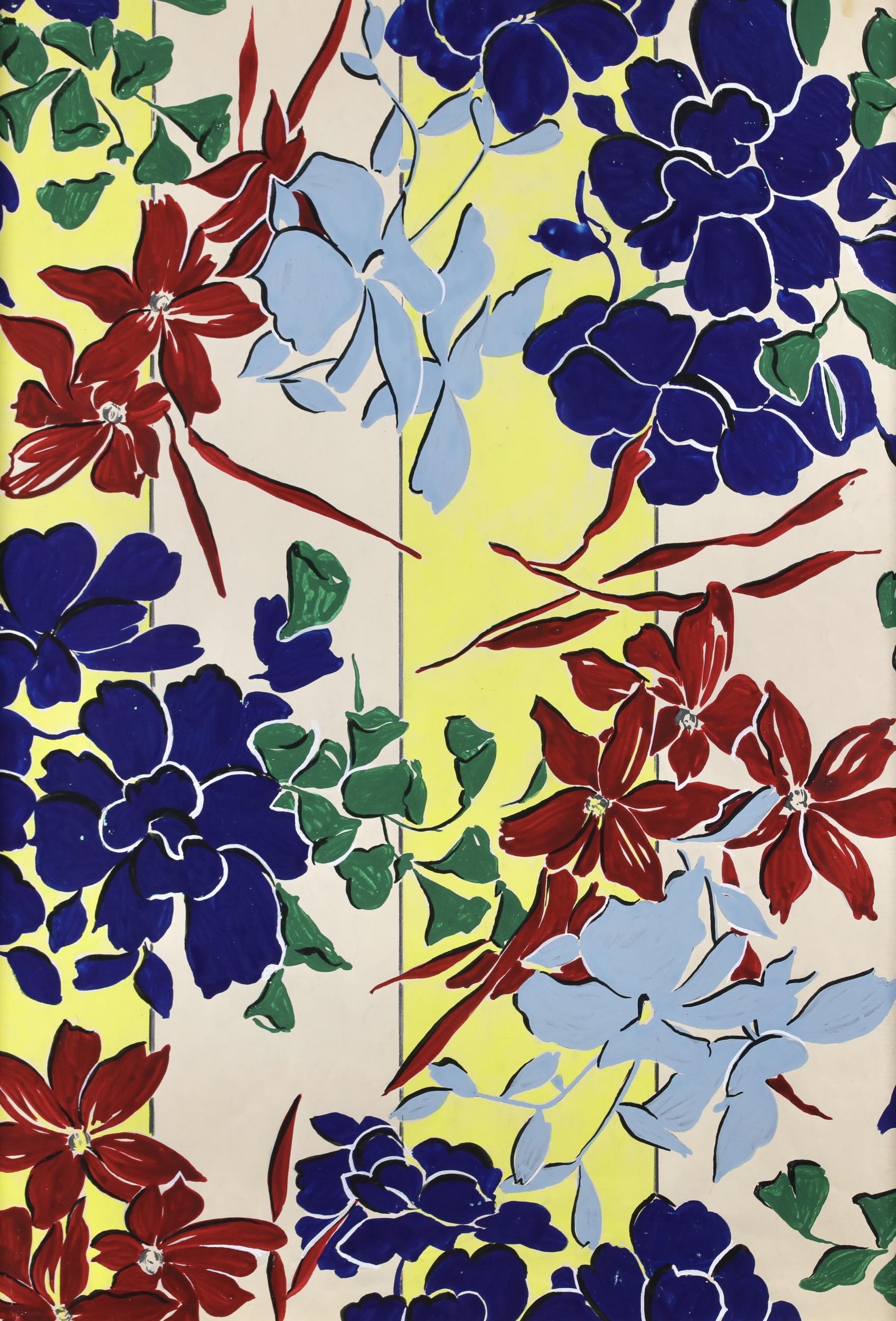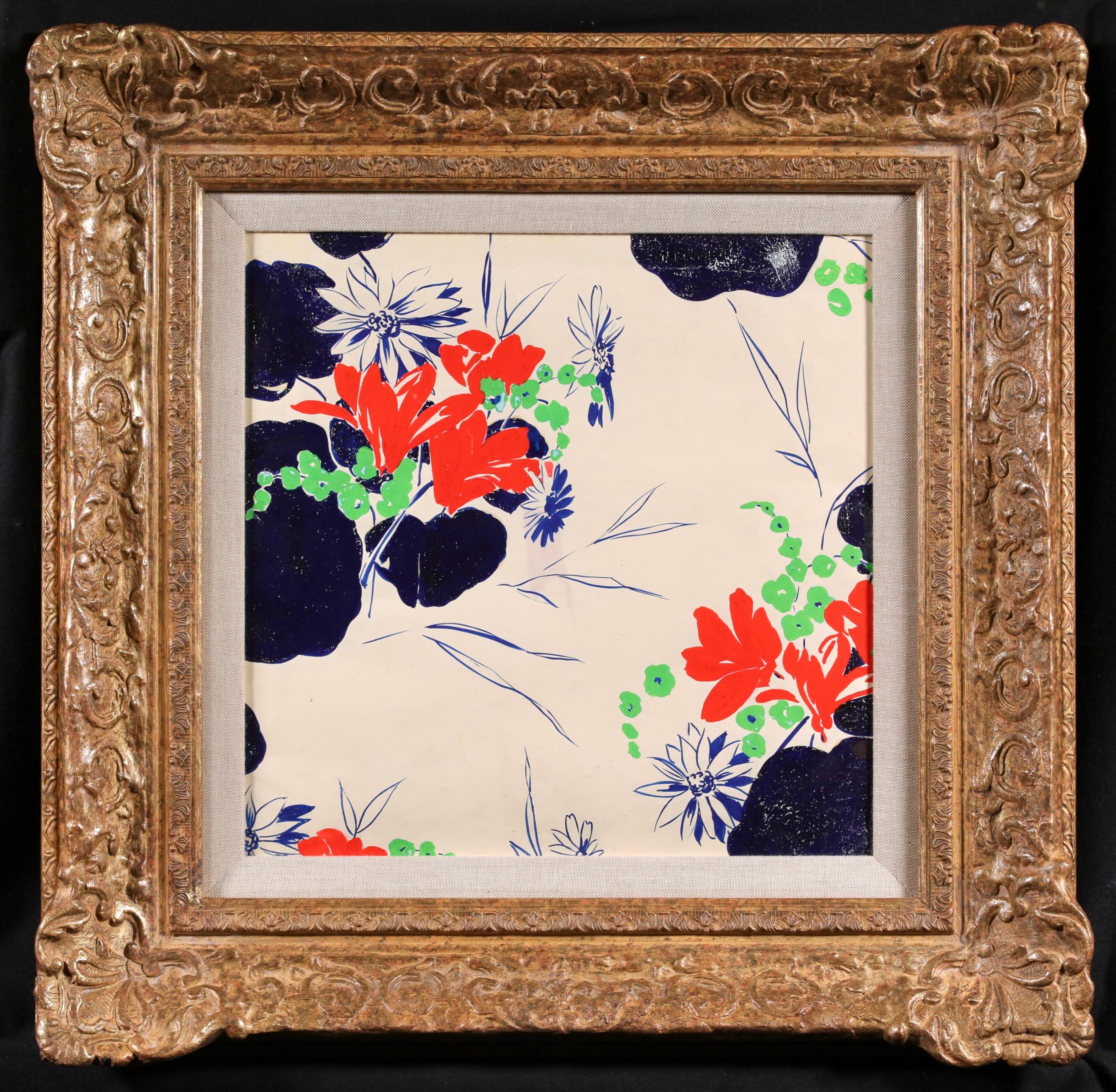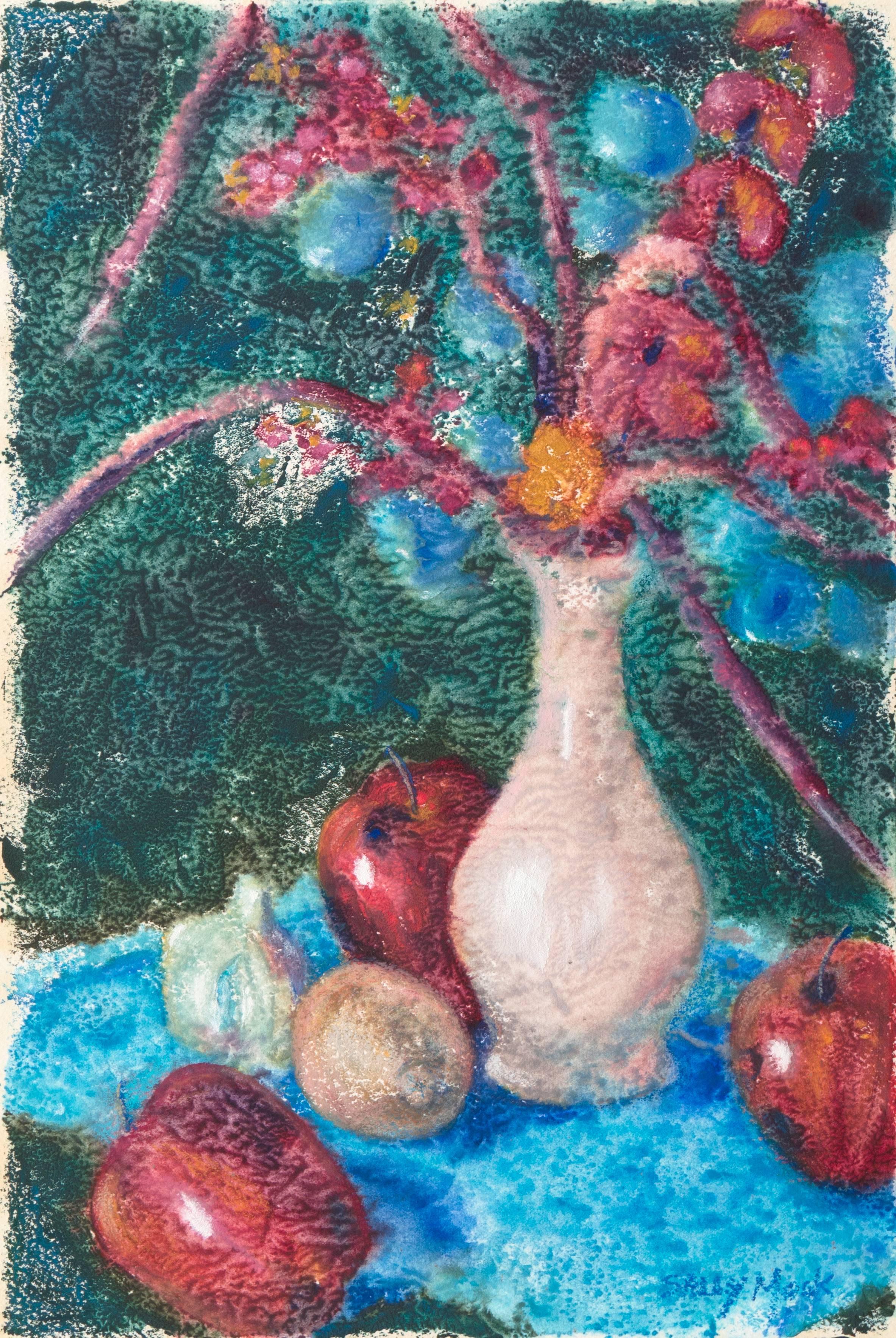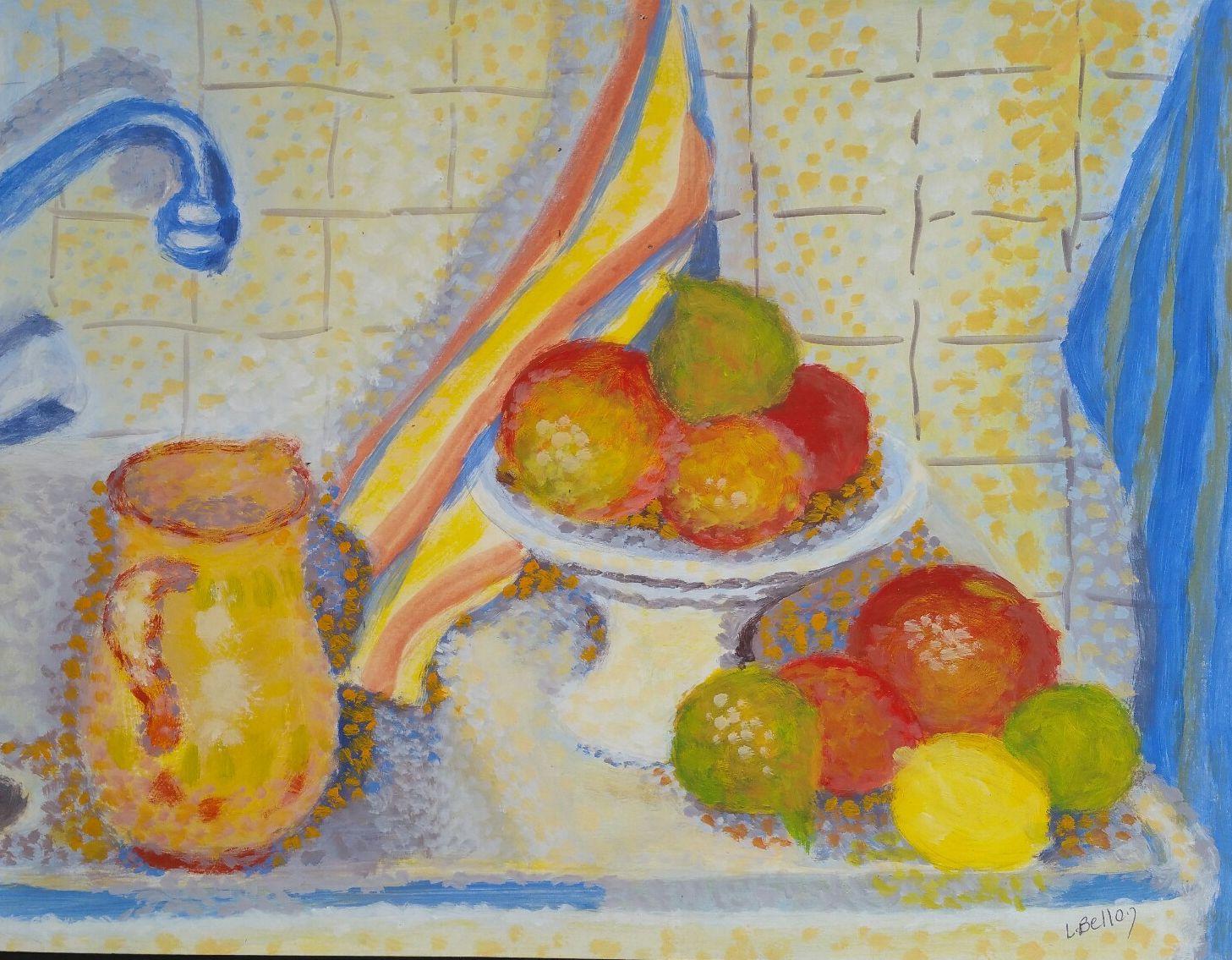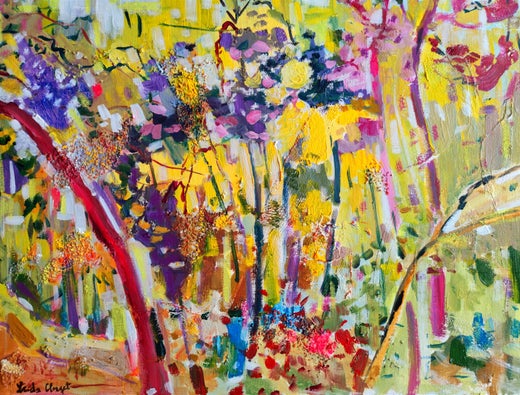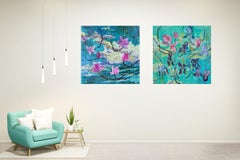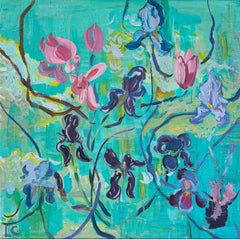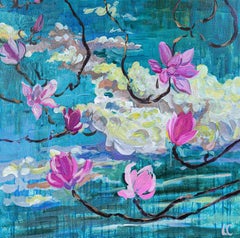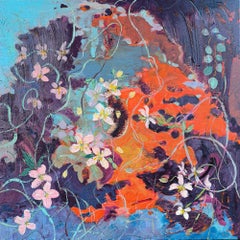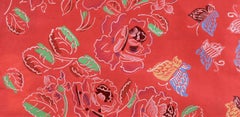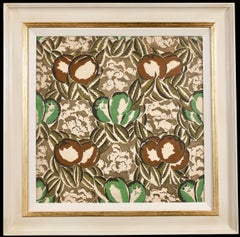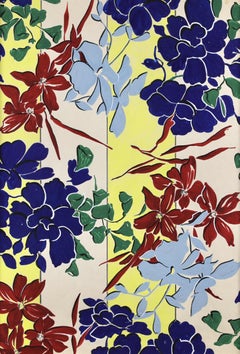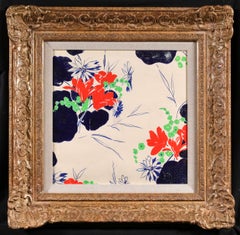Items Similar to Floral gouache impressionist 'Always Roses' by Linda Clerget
Want more images or videos?
Request additional images or videos from the seller
1 of 10
Linda ClergetFloral gouache impressionist 'Always Roses' by Linda Clerget2023
2023
About the Item
The work of Linda Clerget is realized in an impressionist style à la gouache alla prima. The colors are broken and worked in the fresh.
Linda Clerget is a French artist known internationally for her abstract and impressionist landscapes. She works on the creation of a personal language based on strong fundamentals from French impressionist painting.
Evocative and timeless, the energetic paintings by artist Linda Clerget speak to our most primordial selves — a deep connection that the artist is keen to foster. Deeply spiritual and intimate, the canvases are more than beautiful landscapes and abstract gestures. They are an integral part of the artist’s personal journey and an expression of her search for truth, beauty, and meaning in a world that often feels chaotic and cruel.
"In any case, I believe that this is a deep motivation and ambition. I think that art allows us to show another world, a deeper, timeless world which vibrates infinite strings in our minds. Like the shamans, I believe in the idea that our sleep, our intuitions and our creations all reveal strange, fascinating, mysterious things about life and its origins. I don’t have a precise definition, and I don’t look for one. That’s why I like painting: I’m able to reveal this feeling and subtly communicate it to others without them knowing it consciously."
Extract of the interview with Kate Kelly for the Art Journal of Artpreneur - 2023
Gouache on paper sent from France rolled in a tube.
- Creator:Linda Clerget (1985, French)
- Creation Year:2023
- Dimensions:Height: 23.39 in (59.4 cm)Width: 16.54 in (42 cm)Depth: 0.04 in (1 mm)
- Medium:
- Movement & Style:
- Period:
- Condition:
- Gallery Location:THOMERY, FR
- Reference Number:1stDibs: LU2293212985162
"To poetize the world by seeking the essence of beings". A trained actress, Linda Clerget extends her artistic field from theater to the visual arts through the practice of photography and painting. The artist seeks to create a poetry of links between humans and nature, dreams and reality, the human species and spirituality. His works, which navigate between figuration and abstraction, are imbued with vitality and raw beauty; vitality of the touch, of the color, of the dusting of the material... She builds a poetic and intuitive visual universe, which speaks to our sensations and our emotions before our intellect. The spectator is thus projected into "little paradises", waking dreams where time slows down.
About the Seller
4.9
Vetted Professional Seller
Every seller passes strict standards for authenticity and reliability
Established in 2018
1stDibs seller since 2023
45 sales on 1stDibs
- ShippingRetrieving quote...Shipping from: THOMERY, France
- Return Policy
Authenticity Guarantee
In the unlikely event there’s an issue with an item’s authenticity, contact us within 1 year for a full refund. DetailsMoney-Back Guarantee
If your item is not as described, is damaged in transit, or does not arrive, contact us within 7 days for a full refund. Details24-Hour Cancellation
You have a 24-hour grace period in which to reconsider your purchase, with no questions asked.Vetted Professional Sellers
Our world-class sellers must adhere to strict standards for service and quality, maintaining the integrity of our listings.Price-Match Guarantee
If you find that a seller listed the same item for a lower price elsewhere, we’ll match it.Trusted Global Delivery
Our best-in-class carrier network provides specialized shipping options worldwide, including custom delivery.More From This Seller
View AllMagnolia Forever I & Iris bloom too
Located in THOMERY, FR
"Magnolia Forever I" and "Iris Bloom Too" form a captivating duo, each capturing the unique beauty of nature in its own way. In "Magnolia Forever II," the blooming magnolias evoke ti...
Category
21st Century and Contemporary Fauvist Abstract Paintings
Materials
Acrylic
Iris bloom too
Located in THOMERY, FR
"Iris Bloom Too" is a magnificent creation that captures the delicate beauty of irises and magnolias in all their splendor. Set against a vibrant green backdrop, these blossoming flo...
Category
21st Century and Contemporary Fauvist Still-life Paintings
Materials
Acrylic
MAGNOLIA FOREVER
Located in THOMERY, FR
"Magnolia Forever" is a captivating depiction of a serene sky adorned with billowing clouds and delicate magnolia blossoms. The artist skillfully captures the ephemeral beauty of nat...
Category
21st Century and Contemporary Fauvist Abstract Paintings
Materials
Ink, Acrylic
EMBRACING THE PRESENT
Located in THOMERY, FR
In a whirlwind of vibrant colors, "Embracing the Present" captures the very essence of the present moment. Against an orange background, shades of blue and violet intertwine, creatin...
Category
21st Century and Contemporary Fauvist Abstract Paintings
Materials
Acrylic
Spring Whispers
Located in THOMERY, FR
Spring Whispers captures the fleeting magic of a blooming garden in motion. Painted from life in a moment of deep connection with nature, this expressive watercolour evokes the joyfu...
Category
21st Century and Contemporary Abstract Still-life Drawings and Watercolors
Materials
Paper, Watercolor
"Green Secret", watercolor and ink on paper
Located in THOMERY, FR
This work is part of the artist's Les Naturenales series which celebrates the contemplation of nature through sensual artworks on paper.
The background of the work, realized on water...
Category
21st Century and Contemporary Modern Still-life Drawings and Watercolors
Materials
Ink, Watercolor
$231 Sale Price
50% Off
You May Also Like
Fleurs et Papillons - Fauvist Flowers Watercolor & Gouache by Raoul Dufy
By Raoul Dufy
Located in Marlow, Buckinghamshire
Botanical watercolour and gouache on paper circa 1920 by French fauvist painter Raoul Dufy. The work depicts flowers in red and butterflies in blues, yellows, black and white. This work was executed by Dufy as a fabric design.
Dimensions:
Framed: 17"x27"
Unframed: 10"x20"
Provenance:
Private collection of works by Raoul Dufy for Bianchini Ferier
Bianchini Ferrier Collection - Christie's London - July 2001
SF Fall Show
Raoul Dufy was one of a family of nine children, including five sisters and a younger brother, Jean Dufy, also destined to become a painter. Their father was an accountant in the employ of a major company in Le Havre. The Dufy family was musically gifted: his father was an organist, as was his brother Léon, and his youngest brother Gaston was an accomplished flautist who later worked as a music critic in Paris. Raoul Dufy's studies were interrupted at the age of 14, when he had to contribute to the family income. He took a job with an importer of Brazilian coffee, but still found time from 1892 to attend evening courses in drawing and composition at the local college of fine arts under Charles Marie Lhullier, former teacher of Othon Friesz and Georges Braque. He spent his free time in museums, admiring the paintings of Eugène Boudin in Le Havre and The Justice of Trajan in Rouen. A municipal scholarship enabled him to leave for Paris in 1900, where he lodged initially with Othon Friesz. He was accepted by the École des Beaux-Arts, where he studied under Léon Bonnat, whose innate conservatism prompted Dufy to remark later that it was 'good to be at the Beaux-Arts providing one knew one could leave'.
And leave he did, four years later, embarking with friends and fellow students on the rounds of the major Paris galleries - Ambroise Vollard, Durand-Ruel, Eugène Blot and Berheim-Jeune. For Dufy and his contemporaries, Impressionism represented a rejection of sterile academism in favour of the open-air canvases of Manet, the light and bright colours of the Impressionists, and, beyond them, the daringly innovative work of Gauguin and Van Gogh, Seurat, Cézanne, Toulouse-Lautrec and others. Dufy was an out-and-out individualist, however, and was not tempted to imitate any of these artists. He produced, between 1935 and 1937, Fée Electricité (Spirit of Electricity), the emblem for the French utilities company Electricité de France (EDF).
Dufy visited the USA for the first time in 1937, as a member of the Carnegie Prize jury. In 1940, the outbreak of war (and his increasingly rheumatic condition) persuaded him to settle in Nice. When he eventually returned to Paris 10 years later, his rheumatism had become so debilitating that he immediately left for Boston to follow a course of pioneering anti-cortisone treatment. He continued working, however, spending time first in Harvard and then in New York City before moving to the drier climate of Tucson, Arizona. The cortisone treatment was by and large unsuccessful, although he did recover the use of his fingers. He returned to Paris in 1951 and decided to settle in Forcalquier, where the climate was more clement. Within a short time, however, he was wheelchair-bound. He died in Forcalquier in March 1953 and was buried in Cimiez.
Between 1895 and 1898, Raoul Dufy painted watercolours of landscapes near his native Le Havre and around Honfleur and Falaise. By the turn of the century, however, he was already painting certain subjects that were to become hallmarks of his work - flag-decked Parisian cityscapes, Normandy beaches teeming with visitors, regattas and the like, including one of his better-known early works, Landing Stage at Ste-Adresse. By 1905-1906 Friesz, Braque, Matisse, Derain, Vlaminck, Van Dongen and Rouault were described collectively as Fauves (the wild beasts). What they had in common was a desire to innovate, but they felt constrained nonetheless to meet formally to set out the guiding principles of what promised to be a new 'movement'. Dufy quickly established that those principles were acceptable; moreover, he was most impressed by one particular painting by Henri Matisse ( Luxury, Calm and Voluptuousness) which, to Dufy, embodied both novelty and a sense of artistic freedom. Dufy promptly aligned himself with the Fauves. Together with Albert Marquet in particular, he spent his time travelling the Normandy coast and painting views similar...
Category
1920s Fauvist Still-life Drawings and Watercolors
Materials
Paper, Watercolor, Gouache
Projet de Tissus - Fauvist Still Life Study Gouache by Raoul Dufy
By Raoul Dufy
Located in Marlow, Buckinghamshire
Botanical gouache on paper circa 1920 by French fauvist painter Raoul Dufy. The work depicts a study of apples and pears. This work was executed by Dufy as a fabric design.
Dimensio...
Category
1920s Fauvist Still-life Drawings and Watercolors
Materials
Paper, Gouache
Projet de Fleurs - Fauvist Flowers Gouache by Raoul Dufy
By Raoul Dufy
Located in Marlow, Buckinghamshire
Botanical gouache on paper circa 1920 by French fauvist painter Raoul Dufy. The work flowers in red and blues with green foliage against a yellow and white stripped background.
Dimensions:
Framed: 25"x20"
Unframed: 18"x13"
Raoul Dufy was one of a family of nine children, including five sisters and a younger brother, Jean Dufy, also destined to become a painter. Their father was an accountant in the employ of a major company in Le Havre. The Dufy family was musically gifted: his father was an organist, as was his brother Léon, and his youngest brother Gaston was an accomplished flautist who later worked as a music critic in Paris. Raoul Dufy's studies were interrupted at the age of 14, when he had to contribute to the family income. He took a job with an importer of Brazilian coffee, but still found time from 1892 to attend evening courses in drawing and composition at the local college of fine arts under Charles Marie Lhullier, former teacher of Othon Friesz and Georges Braque. He spent his free time in museums, admiring the paintings of Eugène Boudin in Le Havre and The Justice of Trajan in Rouen. A municipal scholarship enabled him to leave for Paris in 1900, where he lodged initially with Othon Friesz. He was accepted by the École des Beaux-Arts, where he studied under Léon Bonnat, whose innate conservatism prompted Dufy to remark later that it was 'good to be at the Beaux-Arts providing one knew one could leave'.
And leave he did, four years later, embarking with friends and fellow students on the rounds of the major Paris galleries - Ambroise Vollard, Durand-Ruel, Eugène Blot and Berheim-Jeune. For Dufy and his contemporaries, Impressionism represented a rejection of sterile academism in favour of the open-air canvases of Manet, the light and bright colours of the Impressionists, and, beyond them, the daringly innovative work of Gauguin and Van Gogh, Seurat, Cézanne, Toulouse-Lautrec and others. Dufy was an out-and-out individualist, however, and was not tempted to imitate any of these artists. He produced, between 1935 and 1937, Fée Electricité (Spirit of Electricity), the emblem for the French utilities company Electricité de France (EDF).
Dufy visited the USA for the first time in 1937, as a member of the Carnegie Prize jury. In 1940, the outbreak of war (and his increasingly rheumatic condition) persuaded him to settle in Nice. When he eventually returned to Paris 10 years later, his rheumatism had become so debilitating that he immediately left for Boston to follow a course of pioneering anti-cortisone treatment. He continued working, however, spending time first in Harvard and then in New York City before moving to the drier climate of Tucson, Arizona. The cortisone treatment was by and large unsuccessful, although he did recover the use of his fingers. He returned to Paris in 1951 and decided to settle in Forcalquier, where the climate was more clement. Within a short time, however, he was wheelchair-bound. He died in Forcalquier in March 1953 and was buried in Cimiez.
Between 1895 and 1898, Raoul Dufy painted watercolours of landscapes near his native Le Havre and around Honfleur and Falaise. By the turn of the century, however, he was already painting certain subjects that were to become hallmarks of his work - flag-decked Parisian cityscapes, Normandy beaches teeming with visitors, regattas and the like, including one of his better-known early works, Landing Stage at Ste-Adresse. By 1905-1906 Friesz, Braque, Matisse, Derain, Vlaminck, Van Dongen and Rouault were described collectively as Fauves (the wild beasts). What they had in common was a desire to innovate, but they felt constrained nonetheless to meet formally to set out the guiding principles of what promised to be a new 'movement'. Dufy quickly established that those principles were acceptable; moreover, he was most impressed by one particular painting by Henri Matisse ( Luxury, Calm and Voluptuousness) which, to Dufy, embodied both novelty and a sense of artistic freedom. Dufy promptly aligned himself with the Fauves. Together with Albert Marquet in particular, he spent his time travelling the Normandy coast and painting views similar...
Category
1920s Fauvist Still-life Drawings and Watercolors
Materials
Paper, Gouache
Projet de Tissus - Fauvist Flowers Watercolor & Gouache by Raoul Dufy
By Raoul Dufy
Located in Marlow, Buckinghamshire
Botanical watercolour and gouache on paper circa 1920 by French fauvist painter Raoul Dufy. The work depicts flowers in red, blue and green. This work was executed by Dufy as a fabric design.
Dimensions:
Framed: 19.5"x19.5"
Unframed: 12"x12"
Provenance:
Private collection of works by Raoul Dufy for Bianchini Ferier
Bianchini Ferrier Collection - Christie's London - July 2001
SF Fall Show
Raoul Dufy was one of a family of nine children, including five sisters and a younger brother, Jean Dufy, also destined to become a painter. Their father was an accountant in the employ of a major company in Le Havre. The Dufy family was musically gifted: his father was an organist, as was his brother Léon, and his youngest brother Gaston was an accomplished flautist who later worked as a music critic in Paris. Raoul Dufy's studies were interrupted at the age of 14, when he had to contribute to the family income. He took a job with an importer of Brazilian coffee, but still found time from 1892 to attend evening courses in drawing and composition at the local college of fine arts under Charles Marie Lhullier, former teacher of Othon Friesz and Georges Braque. He spent his free time in museums, admiring the paintings of Eugène Boudin in Le Havre and The Justice of Trajan in Rouen. A municipal scholarship enabled him to leave for Paris in 1900, where he lodged initially with Othon Friesz. He was accepted by the École des Beaux-Arts, where he studied under Léon Bonnat, whose innate conservatism prompted Dufy to remark later that it was 'good to be at the Beaux-Arts providing one knew one could leave'.
And leave he did, four years later, embarking with friends and fellow students on the rounds of the major Paris galleries - Ambroise Vollard, Durand-Ruel, Eugène Blot and Berheim-Jeune. For Dufy and his contemporaries, Impressionism represented a rejection of sterile academism in favour of the open-air canvases of Manet, the light and bright colours of the Impressionists, and, beyond them, the daringly innovative work of Gauguin and Van Gogh, Seurat, Cézanne, Toulouse-Lautrec and others. Dufy was an out-and-out individualist, however, and was not tempted to imitate any of these artists. He produced, between 1935 and 1937, Fée Electricité (Spirit of Electricity), the emblem for the French utilities company Electricité de France (EDF).
Dufy visited the USA for the first time in 1937, as a member of the Carnegie Prize jury. In 1940, the outbreak of war (and his increasingly rheumatic condition) persuaded him to settle in Nice. When he eventually returned to Paris 10 years later, his rheumatism had become so debilitating that he immediately left for Boston to follow a course of pioneering anti-cortisone treatment. He continued working, however, spending time first in Harvard and then in New York City before moving to the drier climate of Tucson, Arizona. The cortisone treatment was by and large unsuccessful, although he did recover the use of his fingers. He returned to Paris in 1951 and decided to settle in Forcalquier, where the climate was more clement. Within a short time, however, he was wheelchair-bound. He died in Forcalquier in March 1953 and was buried in Cimiez.
Between 1895 and 1898, Raoul Dufy painted watercolours of landscapes near his native Le Havre and around Honfleur and Falaise. By the turn of the century, however, he was already painting certain subjects that were to become hallmarks of his work - flag-decked Parisian cityscapes, Normandy beaches teeming with visitors, regattas and the like, including one of his better-known early works, Landing Stage at Ste-Adresse. By 1905-1906 Friesz, Braque, Matisse, Derain, Vlaminck, Van Dongen and Rouault were described collectively as Fauves (the wild beasts). What they had in common was a desire to innovate, but they felt constrained nonetheless to meet formally to set out the guiding principles of what promised to be a new 'movement'. Dufy quickly established that those principles were acceptable; moreover, he was most impressed by one particular painting by Henri Matisse ( Luxury, Calm and Voluptuousness) which, to Dufy, embodied both novelty and a sense of artistic freedom. Dufy promptly aligned himself with the Fauves. Together with Albert Marquet in particular, he spent his time travelling the Normandy coast and painting views similar...
Category
1920s Fauvist Still-life Drawings and Watercolors
Materials
Paper, Watercolor, Gouache
'Apples and Cherry Blossoms', Modernist Still Life
By Sally Mack
Located in Santa Cruz, CA
Signed lower right "Sally Mack" (American, 20th century) and painted circa 1975. Painted on Arches paper.
A vibrant, Post-Impressionist still-life showing branches of cherry-blossom...
Category
1970s Post-Impressionist Still-life Paintings
Materials
Gouache, Paper
French Neo-Impressionist Still Life Pointillist Mid 20th Century Painting
By Louis Bellon
Located in Cirencester, Gloucestershire
Neo Impressionist Still Life
by Louis Bellon (French 1908-1998)
signed lower right
gouache painting on paper, unframed
measurements: 10 x 12.75 inche...
Category
Mid-20th Century Pointillist Still-life Paintings
Materials
Gouache
Recently Viewed
View AllMore Ways To Browse
The Art Journal
Speaking Tubes
Impressionist Roses
Don Brown Drawing
Watercolor Impressionist Floral Paintings
Abstract Floral Watercolor
A Clerget
Large Framed Contemporary Paintings
Red White Blue Art
Traditional Oil Paintings
Vintage War Photographs
Military Prints
Water Abstract Painting
Arts And Crafts Painting
14 Century Painting
Italian Royal
Painting Green And Yellow
Cubism Art
